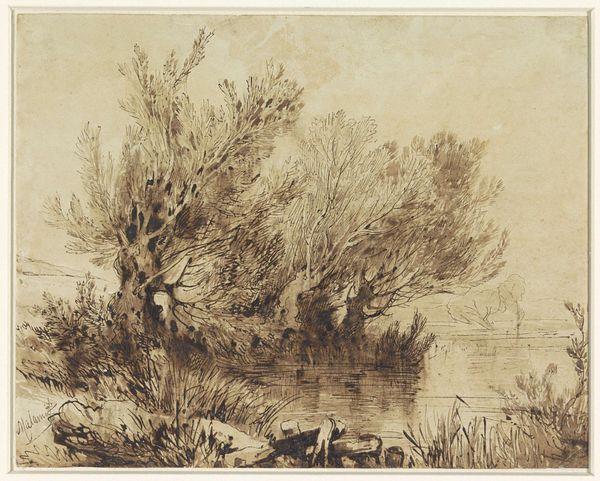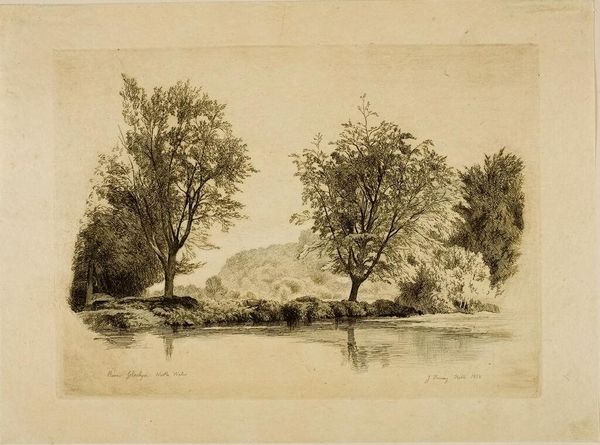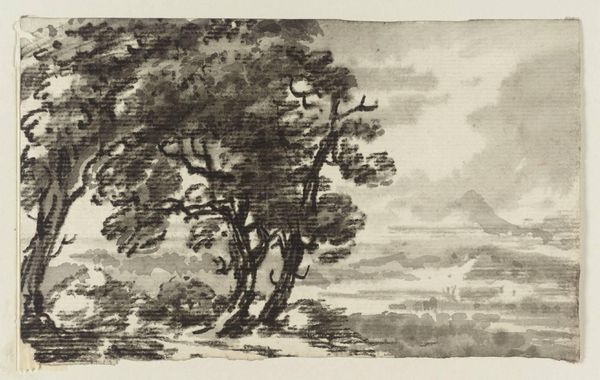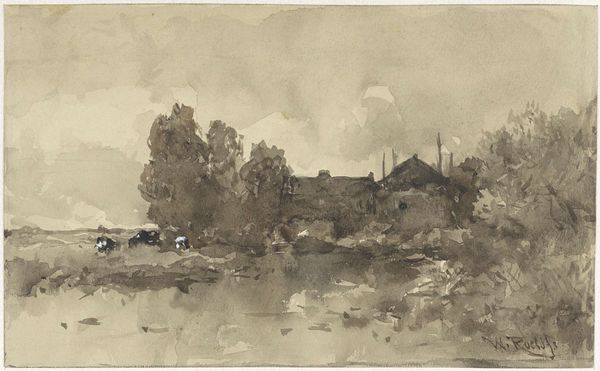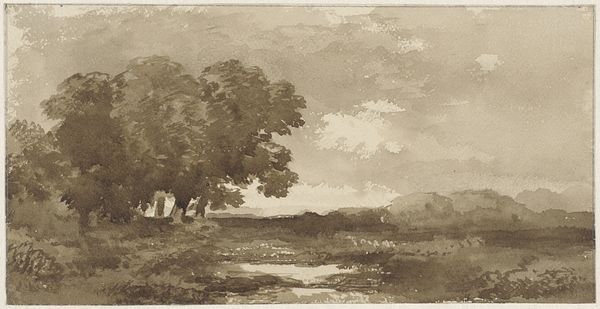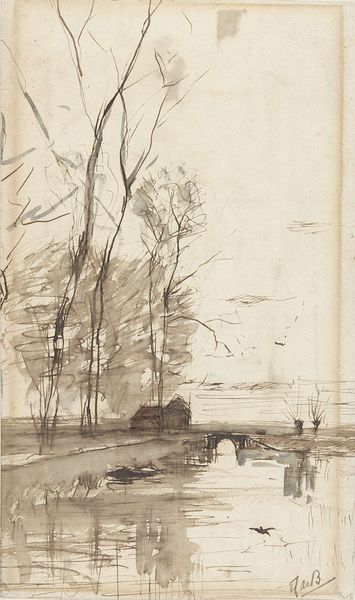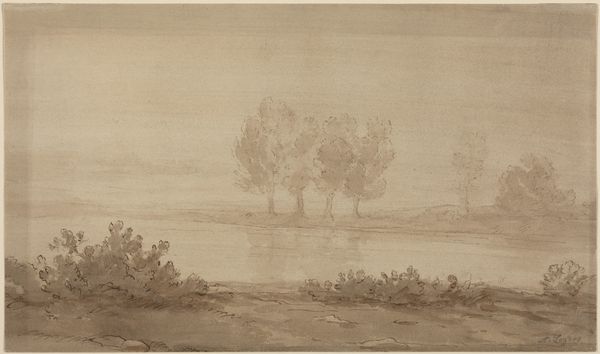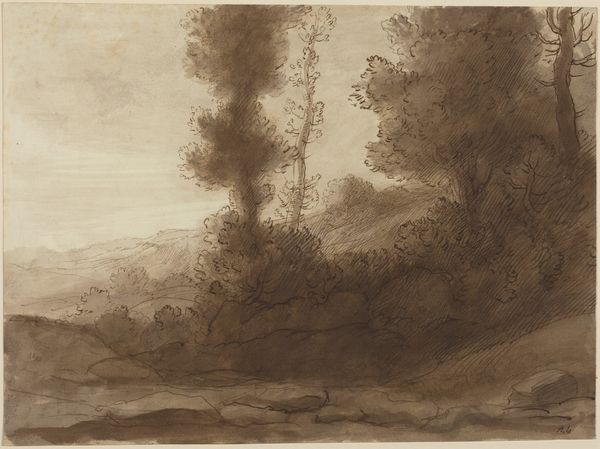
plein-air, watercolor
#
impressionism
#
plein-air
#
landscape
#
watercolor
#
watercolor
Dimensions: height 71 mm, width 122 mm
Copyright: Rijks Museum: Open Domain
"Knotwilligen aan de waterkant te Loosdrecht" is a watercolor and pencil drawing by Willem Roelofs. Roelofs lived through the rise of the Dutch landscape tradition. In the 19th century, landscape painting offered a way to express national identity and cultural values, reflecting a deep connection to the land. Roelofs, along with other artists of his time, sought to capture the unique atmosphere of the Dutch countryside, moving away from romanticized depictions towards a more realistic representation of nature. He focused on the subtleties of light and weather, and on the emotional impact of the landscape. "I try to render, not reproduce nature" Roelofs stated. His focus on landscape also mirrors a broader societal trend, reflecting the changing relationship between people and the environment. As industrialization progressed, the natural world became increasingly valued as a source of solace and inspiration, as well as a symbol of national pride. The monochrome tonality of the drawing is typical of his earlier works, which are characterized by his sensitivity to tonal values. They evoke a sense of tranquility and contemplation, which invites us to connect with the landscape on a personal level.
Comments
No comments
Be the first to comment and join the conversation on the ultimate creative platform.
